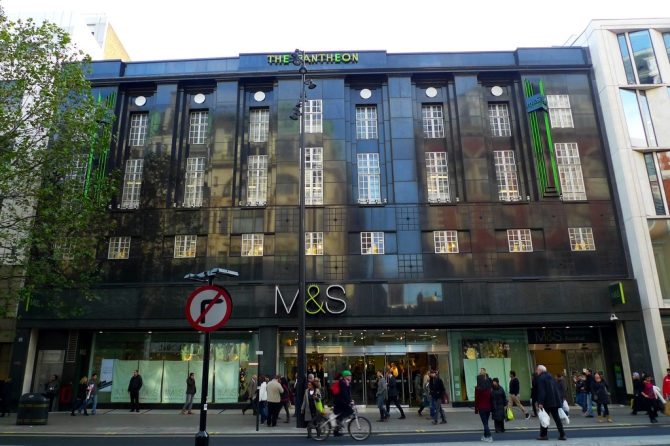Although many High Street retailers have seen impressive sales since the start of the year, Marks and Spencer continues to struggle. While the retailer’s food sales remain strong, as they traditionally have, non-food sales fell steeply in the past quarter.

During the three months to the 31st of March like for like non-food sales fell by 0.6 per cent, marking the 11th consecutive quarter of sales drops in this division. However, this result was much better than the 1 per cent tumble predicted by analysts and a strong improvement from the previous quarter’s 2.1 per cent decline which included the disappointing Christmas season.
As a result of this performance, analysts remain convinced that predictions regarding Marks and Spencer’s annual results will be correct. Industry experts forecast that the retailer’s pre-tax profits will shrink by 6 per cent to £623 million when the annual report is released on the 20th of next month.
While the results for the past quarter may seem disappointing at first glance, there were a number of positive aspects to the report. The retailer’s clothing range, which has attracted a great deal of criticism due to designs and cost, saw sales increase by 0.6 per cent on a like for like basis, while sales made on Marks and Spencer’s online platform grew by 12.5 per cent.
Managing director at retail analyst Conlumino, Neil Saunders, remains optimistic that the past quarter demonstrated a clear sign of “some green shoots of recovery in its non-food division.” Yet he is careful to point out that, although this is very positive, the retailer is by no means out of the woods yet.
He continues; “Although the numbers are not spectacular, and they are set against some soft comparatives, they have at least brought to an end a long running period of decline in the clothing business.
“It is worth noting that although positive, Marks and Spencer’s latest numbers are not high enough for it to have grown its clothing share; by our calculations Marks and Spencer has underperformed the market during this period and, as such, has continued to cede share.”
It is true that total sales increased by 1.5 per cent during the period, but when the impact of stores which have been open for less than a year was discounted this figure turned into a drop of 0.2 per cent. Therefore, Marks and Spencer has a very tricky decision – should the retailer gamble on new store investment, which may pay off but will take a toll on the bottom line, or should it focus on existing stores and risk losing further market share?
Whichever path chief executive Marc Bolland chooses to take, one thing remains clear: Marks and Spencer will have to work very hard to win back consumers from rival chains such as Next.